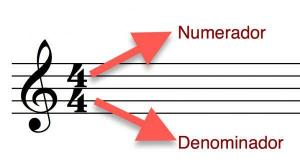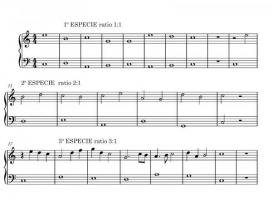Discover what is the COUNTERPOINT in music
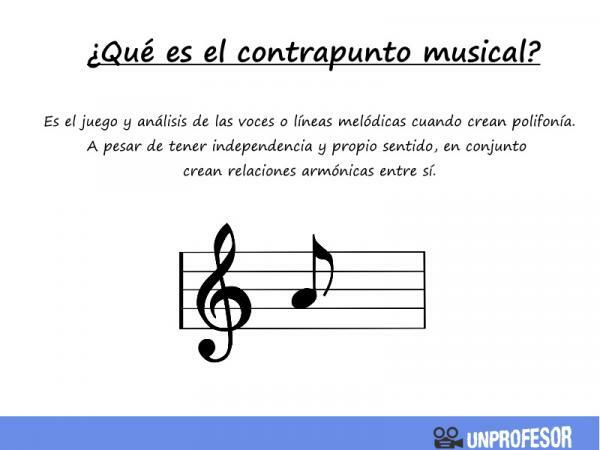
Music is an art full of techniques and phenomena that occur when we combine many sounds. After all, it is the art of creativity with this curious element and when we add elements, the options and combinations multiply almost to unlimited possibilities. In this lesson from a TEACHER, we will learn about one of the musical techniques that explore these elements and you will learn what is the counterpoint in music, this musical concept that great composers always take into account.
Index
- Concepts to understand musical counterpoint
- Counterpoint in music: simple definition
- Counterpoint in music
- Analysis of the musical counterpoint
Concepts to understand the musical counterpoint.
To understand what counterpoint in music is, we must understand other key musical words:
- Melody: It is a succession of notes with a determined pitch and a musical sense. In a work the melody is what we can sing or whistle.
- Voice / voices: This refers not necessarily to the “human voice” but to the different melodic lines who can own a work. They have independence and musical sense. In music, voices are analyzed by height levels, we classify them by their tessitura (how low or high are) this also helps us to know what function they perform in relation to the other notes that may sound simultaneously. In other words, this is part of the concept of harmony.
- Polyphony: When multiple melodic voices sound simultaneously.
The counterpoint in music: simple definition.
Knowing these concepts, we can proceed to understand that the counterpoint is the game and analysis of the voices or melodic lines when they create polyphony, which despite having independence and their own meaning, together create harmonic relationships with each other.
Counterpoint does not have a specific limit but most works have 2 to 4 voices that perform polyphony. This is if we talk about melodic lines. It should also be taken into account that the more instruments a work requires to be performed, such as a symphonic work, or complex chords with tensions such as jazz or atonal works, the study of counterpoint can become more complicated from discern.
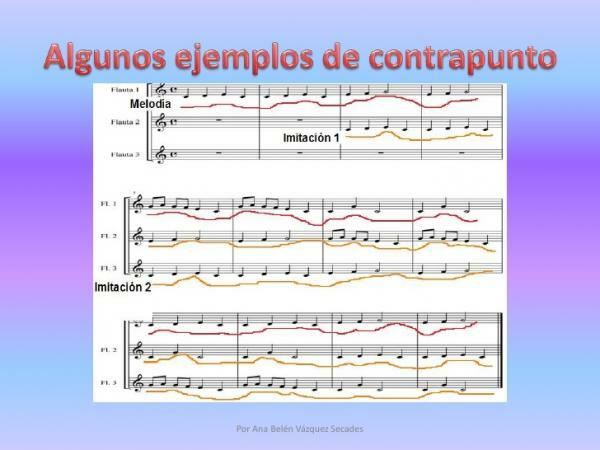
Image: Slideshare
Counterpoint in music.
The musical counterpoint forms an essential part of the musical composition since it provides a work of harmonic richness when done with good taste. In addition to the aesthetic sense, the counterpoint allows to analyze the functions of the notes in a progression and thus create a solid and formal structure, which allows a greater understanding by the listener.
One of the musical forms that makes the most of the counterpoint is the musical fugue, which had a boom during the Baroque period. The biggest exhibitor of him: Johann Sebastian Bach. Bach is recognized as the master of the fugue, so if you want to hear great examples of counterpoint, you can listen to some works by Bach (Toccata and fugue in D minor, The Art of the Fugue BWV 1080, Prelude and Fugue No.1 BWV 846 in C major).
Analysis of the musical counterpoint.
To analyze the musical counterpoint of a work it is necessary find the harmonic function of each note and this is done in two senses: melodic and harmonic.
- For melodic sense we understand the succession of notes in horizontal direction, the relationship that a note has with the next and the interior. For this we look at the distance between one and the other, with tones and semitones.
- And then we have the harmonic senseor, in vertical direction, which is the one that obtains the counterpoint by definition. When we analyze the harmonic meaning of a work, we look at the chords, 2 or more notes that sound simultaneously. When analyzing them we must know what vertical distance (tuning) there is between each of the notes, and thus we know that relationship have and what harmonic function it is performing (if a note is the fundamental, the fifth, the third, a tension... etc.).
Counterpoint species
To categorize the studies of counterpoint, it has been reduced to 5 species:
- Note against note.
- Two notes against one.
- Three to six notes against one.
- Suspended notes (which continue to sound after being played).
- "Flowery counterpoint" refers to all of the above in combination.
Counterpoint techniques
On the other hand, specific counterpoint techniques have also been established:
- Free imitation, in which the main motif is developed in one voice and then is imitated by others.
- The Canon, where one or more voices mimic the main motif but shifted or reversed, magnified, retrograde, etc.
- The multiple counterpoint, which is when there are more than one counterpoint relationship, reaching triple, quadruple, etc. It is in this technique that the fugue is centered and for many it is the maximum expression of the counterpoint.
Now that you know more about this technique in music, you can dedicate yourself to listening to the examples and even venture to study it. Remember that music offers thousands of possibilities and therefore can be complex. Still, understanding can lead to a greater appreciation of art.
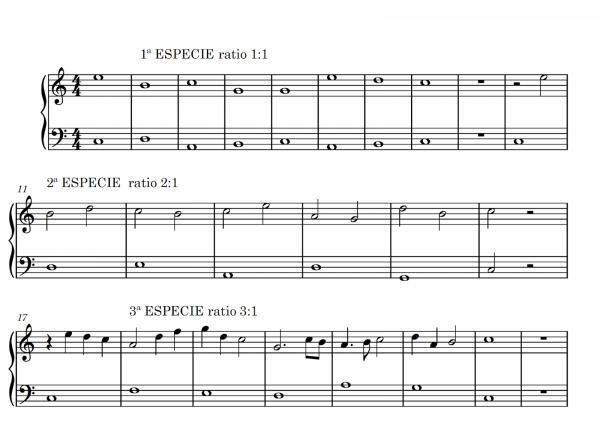
Image: Harmony and Composition
If you want to read more articles similar to What is counterpoint in music, we recommend that you enter our category of Musical language.

